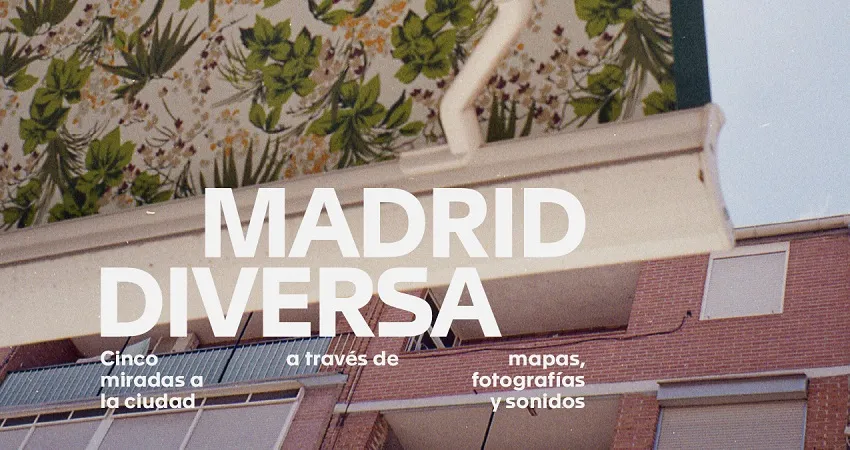Diverse Madrid
This exhibition analyses diversity as a distinctive feature of the city of Madrid in the contemporary context. In the current situation, in which cities tend to become standardised, to replicate commercial models and cultural structures, complexity transcends as a value in itself, as an identifying trait of urban life.
Diverse Madrid explores this quality using three tools to describe the city: an atlas of large-scale maps, a photographic journey, and a soundscape that overlap one another as fragments of the same reality. The exhibition invites us to immerse ourselves in the Madrid of today, organised into five areas: The Inhabited City, The Built City, The Shared City, The City of Uses and The City in Transformation.
The maps construct an algorithmic storytelling based on massive data with a common thread of the city as a diverse environment. Metrics that do not focus on what the city contains, but rather on how diverse everything we find in it actually is. A city seen through data tends to focus on averages, the frequent and the similar. The perspective taken here aims to look at the strange, the improbable, the casual and the different. Two of the areas analyse the physical and inhabited environment while the other three propose an approach to urban behaviour through uses, public space and the transformation of the city itself. The maps, created by the think tank 300.000 Km/s, are drawn from publicly available data from different sources: The National Institute of Statistics, the Land Registry, Madrid City Council, topographic base, satellite images and others.
The photographs are a personal approach by five artists who record the landscape, the people and the territory: Eva G. Herrero, Ángela Suárez, Ernesto Peña, Rainer Torrado and Ana Belén Mejía. A fragmented vision of neighbourhoods, streets and their inhabitants, which forms an unexpected documentary archive based on photographs and videos in vertical format, reels that respond to the areas of the exhibition.
The sounds approach the city by giving new meaning to the buildings, the uses, the everyday stories of the people who live there, the public spaces and the transformations.
Lucas Bolaño’s soundscapes are the result of recent field recordings that he has then mixed with synthesizers, processed electric guitars and audio editing. He seeks similarities in sound between the music and the recordings through timbre, rhythm, harmony and other aspects related to acoustics and space or simply by using music as a base and common thread that helps to connect the field recordings and at the same time bring unity to the project.
Ariadna Cantis and Javier Peña are curators of this project
Ariadna Cantis obtained her degree in architecture from the Higher Technical School of Architecture of Madrid. An author, critic and independent curator of architecture, she divides her activity between, on the one hand, the dissemination of architecture, urban planning and research and, on the other, curatorship, through projects, exhibitions, workshops and publications, her aim being to generate critical thinking between the world of architecture and contemporary culture, carrying out research on the frontiers of both disciplines.
Javier Peña-Ibáñez an architect with a studio in Madrid, is also a curator, researcher, teacher and consultant in architecture, design and the city. As the director of Concéntrico, the International Festival of Design and Architecture of Logroño, he focuses his activity on the management, curatorship and dissemination of cultural projects.
Cartographic research: 300.000 Km/s
Photography: Eva G. Herrero, Ernesto Peña Sanz, Rainer Torrado, Ángela Suarez and Ana Belén Mejía
Soundscapes: Lucas Bolaño
Exhibition design: Pablo Ferreira
Graphic design: Otro Bureau


